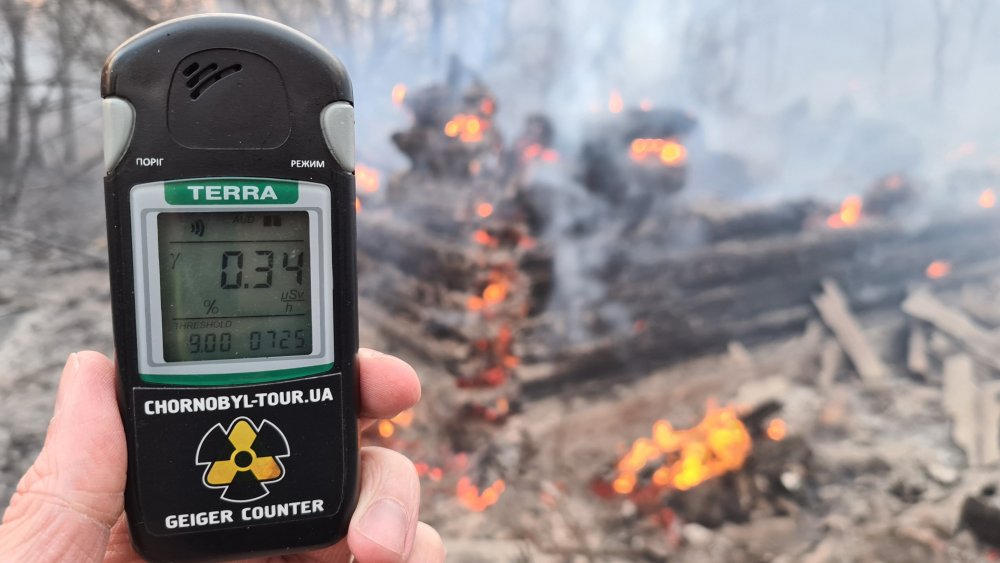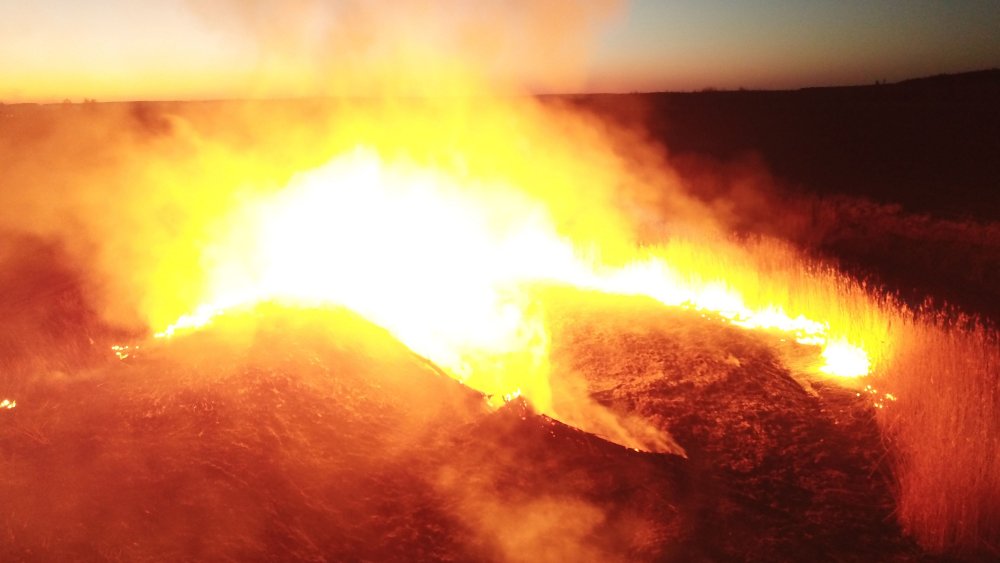The Reason Chernobyl's Radiation Levels Have Spiked
In good news for both fans hoping to see a season two of Chernobyl and radioactive fire monster enthusiasts, radiation levels in the area surrounding the site of the infamous 1986 Chernobyl Nuclear Power Plant accident began spiking on Saturday, April 4th.
The uptick in radiation comes courtesy of a 50 acre wildfire currently burning through the 1,000 square mile exclusion surrounding the abandoned power plant. According to CNN, the fire started on Saturday outside of Vladimirovka, one of several small ever-so-slightly-inhabited villages in the still-irradiated region close to Chernobyl.
Reports from emergency responders in the area show readings of 2.3 microsieverts per hour. The standard readings for the area hover around .14 microsieverts per hour, and the highest allowable amount of natural background radiation is .5 microsieverts per hour. Per PBS, one sievert is the amount of ionizing radiation that the human body needs to be exposed to in order to experience illness. With the recent spike, a person in the area of the forest fire would receive roughly the same amount of radiation that they would if they underwent two dental x-rays per hour.
Cherning out the hits
The fire is currently being combated by a team of 124 firefighters utilizing two planes and a helicopter. A second team of 14 firefighters was working to contain a 12 acre fire nearby as of Tuesday afternoon. Officials stated that the fire and its accompanying radiation surge had not affected the city of Kiev, which NASA images show sits roughly ten degrees east of the area downwind of the blaze.
Forest fires in the region are not a new phenomenon, with head of Ukraine's ecological inspection service Egor Firsov stating that "The problem of setting fires to grass by careless citizens in spring and autumn has long been a very acute problem for us ... Every year we see the same picture — fields, reeds, forests burn in all regions."
The area around Chernobyl has become synonymous with post-nuclear terror since the meltdown at the city's nuclear reactor on April 26th, 1986. It re-entered the spotlight recently thanks to HBO's miniseries on the catastrophe, and is currently a hotspot for "extreme tourism," basically the vacation equivalent of getting your picture taken with a tiger.

